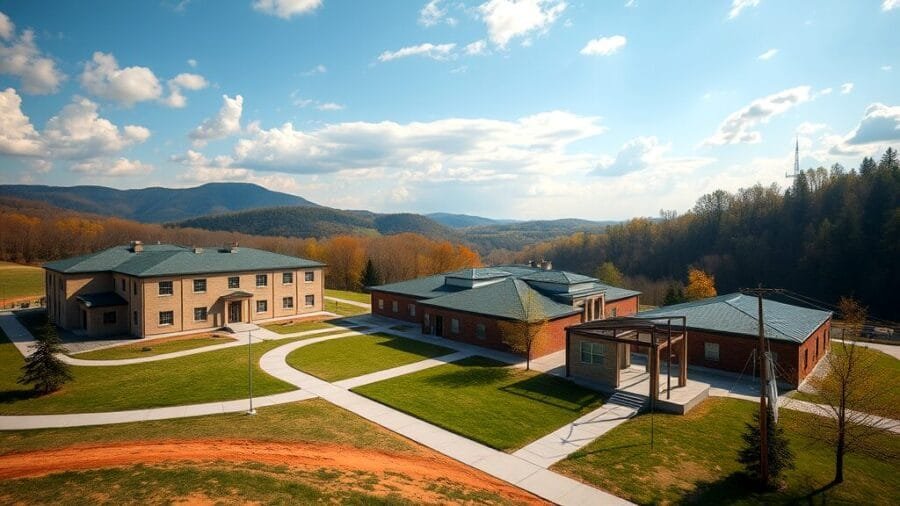West Virginia Prisons: Key Statistics
West Virginia prisons paint a vivid picture of mass incarceration. With a staggering population of 11,000 inmates, the state’s penal system holds a higher percentage of its population than any independent democratic nation. These state justice statistics reveal a troubling reality. Every year, West Virginia jails witness about 34,000 people cycling through, indicating a revolving door of detention. The West Virginia profile shows significant racial disparities, with Black residents facing disproportionately higher incarceration rates. Meanwhile, older individuals, making up 12% of inmates, highlight the need for reform. Beyond brick and mortar, the West Virginia community seeks to reduce costs and aid reintegration through Day Report Centers. Understanding West Virginia state justice is crucial.

Incarceration Trends in the State
Examining the state’s incarceration patterns, West Virginia prisons remain a focal point of concern. The system’s vast numbers portray a revolving door, with roughly 34,000 individuals cycling through jails each year. This paints a picture akin to a tightly wound clock, ticking faster than most other regions. West Virginia jails are infamous for their harsh conditions, contributing to high rates of suicide and drug overdoses.
Older inmates, making up a significant portion of the prison population, highlight the challenges of managing an aging demographic within the system. This situation begs for policy reform, especially as prison gerrymandering complicates resource allocation.
West Virginia’s criminal justice statistics reflect a need for urgent change. With an incarceration rate of 674 per 100,000 residents, reforms in pretrial legislation and improved jail staff conditions are essential.

Demographics and Overrepresentation
Examining the demographics and the issue of overrepresentation, the racial disparities in West Virginia prisons are glaring. While white residents make up a large portion, it’s the Black community that is disproportionately represented. This paints a picture of imbalance. Additionally, there’s a significant number of older inmates over 55, comprising 12% of the prison population. Their presence raises concerns about the efficiency of the system, given their low risk of re-offending.
Such demographic challenges necessitate a critical look at policy reforms, especially for aging populations. This imbalance in West Virginia prisons mirrors the broader state justice statistics. Addressing these disparities can lead to a more just system. The key is reform that accounts for both racial and age-related disparities, ensuring fair treatment for all within the justice system.
West Virginia’s Criminal Justice System
The heartbeat of justice in West Virginia weaves through a complex system. With an incarceration rate of 674 per 100,000, the state faces significant challenges. Reports highlight the urgent need for reform, focusing on improving conditions in detention facilities and addressing systemic issues like racial disparities. The significant number of older inmates, who pose a lower re-offending risk, highlights inefficiencies and expenses in the system.
Community-based alternatives, such as Day Report Centers, offer a glimpse of hope. These programs span 49 counties, providing supervision and support to reduce imprisonment costs. Recent findings stress the need for enhanced pretrial release legislation and better mental and substance abuse care. Tragic incidents in jails, coupled with rising figures, underscore the necessity for change. Reform is not just a goal, but a necessity for a fairer system.

Beyond Prisons and Jails
Moving past traditional incarceration methods, West Virginia’s justice system is evolving. Community-based alternatives, like Day Report Centers, play a crucial role. These centers spread across 49 counties and offer supervision and rehabilitation for those in need. They aim to curb rising imprisonment costs and aid integration into society.
Despite a dwindling population, prisoner numbers are increasing. This paradox highlights the need for broader program expansion. Recent reports by ACLU-WV emphasize enhancing early release legislation and improving staff conditions. They also advocate for better mental and substance abuse support in detention facilities.
The situation calls for more than just surface-level solutions. Addressing these issues is essential for a fairer system. Ensuring effective reintegration and reducing re-offending is critical. Reform efforts must focus on systemic changes to balance the scales of justice effectively.

Recent Reports and Findings
The latest evaluations about the correctional facilities in West Virginia stress an urgent need for reform. ACLU-WV’s recent assessment highlights the importance of updating pretrial release laws and enhancing conditions for personnel. Efforts are underway to improve mental and substance abuse care, which remains critical. These studies call for an independent review of fatalities within these facilities, underlining the systemic issues at play.
In addition, authorities are encouraged to boost support during the initial 30 days of confinement. This targeted intervention seeks to address the crisis in local detention centers, emphasizing the need for comprehensive policy changes.
With an eye on the broader picture, these findings advocate for strategies that go beyond surface-level changes. The focus is on creating long-lasting solutions to ensure a just system, where rehabilitation and safety are paramount. The road to reform might be bumpy, but the destination holds promise.




0 Comments